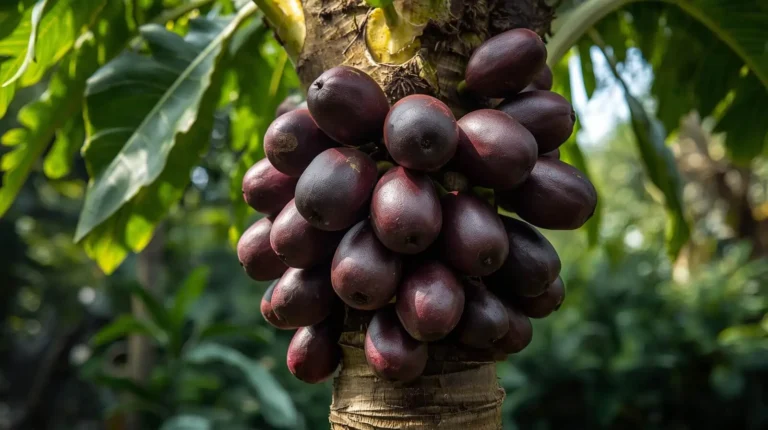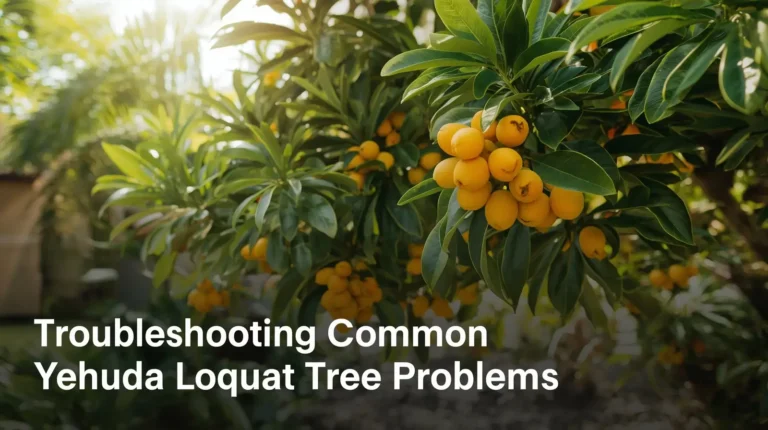When I first started growing my Persian lime trees, also known as the Bearss lime, I was amazed by how quickly this evergreen plant added beauty and vibrant greenery to my garden. This citrus gem thrives beautifully in warm climates across the United States, especially when you nurture it with plenty of sunlight and well-draining soil. With the right growing conditions, your tree can reach around 8 to 20 feet, turning your space into a flourishing landscape filled with joy and refreshing flavor.
Over time, I’ve learned that success with this plant depends on thoughtful planting techniques and consistent care tips. By following a simple guide that highlights essential planting steps and smart care strategies, any gardener can begin cultivating this wonderful variety. The results are not just abundant harvests but also an unforgettable culinary experience when you pick fresh limes straight from your backyard. Understanding the characteristics and growing habits of this fruit tree truly turns gardening into an experience of patience, reward, and natural joy.
1. Understand the Persian Lime Tree: Characteristics and Growing Conditions
When I first planted my Persian lime tree, also known as the Bearss lime, I realized how resilient and beautifully evergreen this citrus plant truly is. It can grow between 8 to 20 feet, depending on how it’s maintained, and it thrives best in the right USDA hardiness zones. For outdoor planting, the tree enjoys full sun for about 6 to 8 hours each day. To achieve optimal growth, ensure your soil is well-draining, slightly sandy, or has a loamy substrate. Maintaining a pH level between 6.0 to 7.0 encourages stronger roots and healthier fruit. If you live in a cooler climate, remember that frost protection and damage prevention are essential steps in keeping your tree safe.
To further improve soil quality, many gardeners use compost and organic matter. You can also explore Are Coffee Grounds Good for Citrus Trees? to learn how natural amendments can benefit lime and lemon trees alike.
The tangy flavor of the fruit makes this tree a rewarding addition to any garden or home orchard. Many gardeners, including Larry Dowdell, have praised Everglades Farm for its prompt delivery, accurate product descriptions, and company reliability, ensuring they receive healthy plants ready for a long gardening journey. With the right growing conditions, ample sunlight, and well-draining soil, your tree will stay thriving year-round. Adding a touch of tropical greenery to your backyard not only brightens the space but also provides fresh produce for your culinary experiences.
For those looking to start, the Fast-Growing Trees collection at Everglades offers great options and even provides high-quality fertilizers to enhance your gardening efforts. Their shipping for orders under $199 comes with a simple flat rate of $29.95, making it accessible for hobbyists and serious growers alike. By following these guidelines, you can cultivate a robust plant that yields delicious citrus fruits, creating an enriching and fulfilling gardening experience every season.
For more region-specific advice on lime cultivation, visit the University of Florida – Lime Growing in the Home Landscape for expert insights on soil types, irrigation, and care.
2. Step-by-Step Guide to Planting Your Persian Lime Tree
- Start by finding the right location in your garden — a sunny spot where your citrus plant can enjoy warmth and 6 to 8 hours of direct sunlight daily. A bright environment with good air circulation helps maintain healthy growth and prevents issues caused by excess humidity. From my own experience, ensuring constant airflow makes a big difference in how the Persian lime tree adapts to its new home.
- Before planting, prepare the ground by doing a pH test on your soil, keeping it within the range 6.0 to 7.0. Mixing organic materials and compost will improve drainage and balance nutrient levels, providing ideal conditions for your tree. As Lou Revelant recommends, adding gypsum at about 20 t/ha strengthens the structure of raised beds, which is beneficial for overall stability and soil aeration.
- Next, dig a hole that’s twice as wide and the same depth as the root ball. When you plant the sapling, place it gently into the surrounding earth. Backfill with soil and lightly compact it to remove air pockets that might affect root development. Once done, give the plant a deep drink of water to settle the soil, ensuring the roots spread smoothly and establish quickly.
- Maintain consistent moisture without waterlogging, as too much water can cause root rot. I prefer using drip irrigation for precise watering and steady hydration, which keeps the soil moist but never soggy. Apply mulch around the base of the plant to retain moisture and suppress weeds. For large gardens, weed matting might seem like a high cost, but it improves production efficiency, cuts reduced input costs, and ensures quicker cost recovery in the long term.
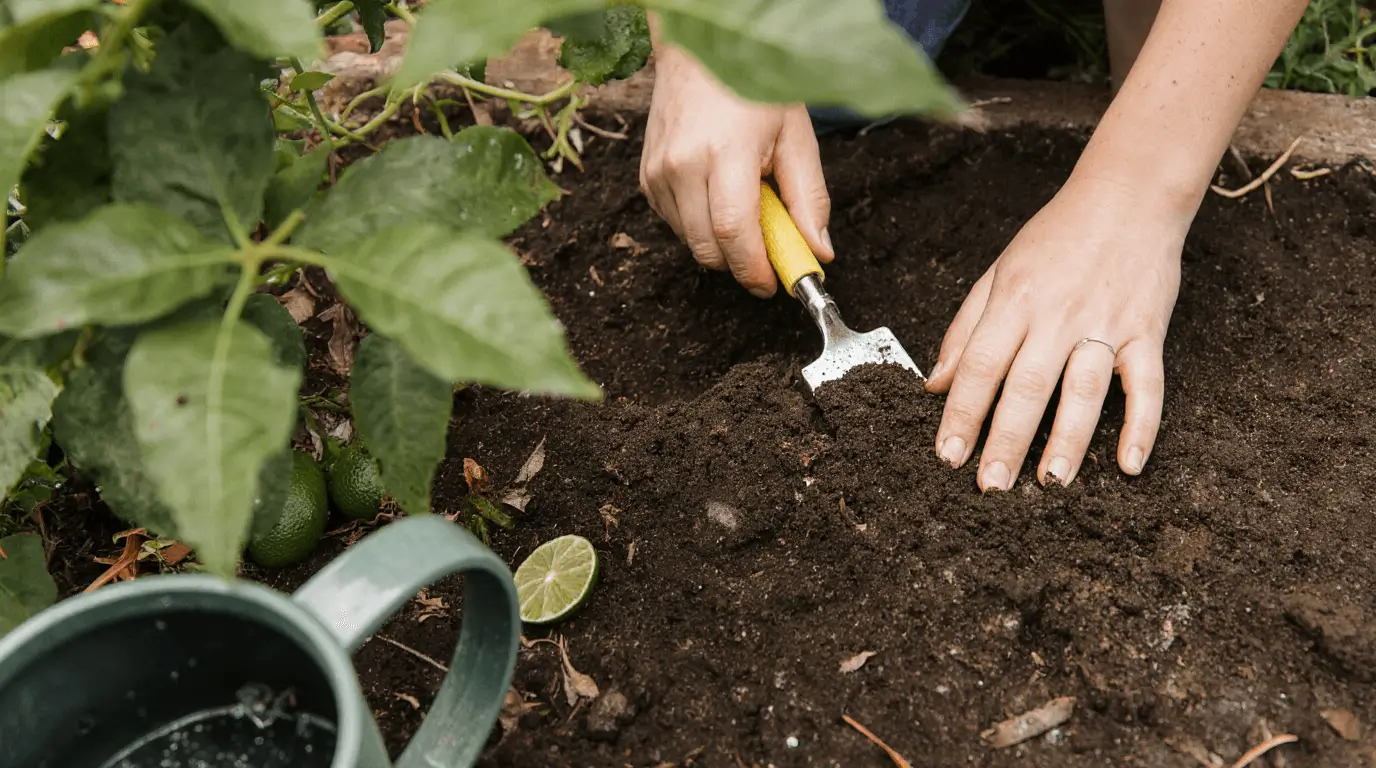
- Finally, keep the mulch a few inches from the trunk to prevent decay and promote robust growth. I’ve found that these trees rarely need manual pollination, even indoors, making their care quite simplified. With patience and proper attention, the process becomes an enjoyable and rewarding experience, especially as you watch your lime tree flourish season after season.
For a better idea of how large your citrus plants can grow, read How Big Do Lemon Trees Get it helps you plan space and pruning better.
3. Essential Care Tips for Thriving Persian Lime Trees
- Proper watering plays a major role in the health of your Persian lime tree. From my own experience, I’ve learned that regular irrigation during dry spells helps both young plants and adult plants thrive. Water them once or twice a week when young, and less frequently as they mature. Keep the soil consistently moist but avoid waterlogging, as it can cause root rot. As Heather Rhoades from Gardening Know How suggests, maintaining proper water requirements and keeping your vegetation evenly hydrated allows the leaves to regrow to their former glory. Providing the right amount of water is the most important step in nurturing your tree for thriving health.
- To encourage vigorous growth, apply a balanced fertilizer every 6 to 8 weeks throughout the growing season, mainly during spring and summer. Follow the manufacturer’s guidelines for application rates to ensure optimal nutrient uptake. Spread it evenly under the canopy and make sure it’s watered completely for better effectiveness. This nurturing approach helps your citrus tree flourish, bringing both beauty and productivity to your space.
- Regular pruning ensures your plant maintains its shape, vitality, and healthy growth. A yearly trimming removes dead or diseased branches, allowing new growth to rejuvenate the tree. The best time is late winter or early spring, right before fresh leaves appear. I’ve noticed this simple habit keeps the structure balanced and strengthens the plant’s natural resistance over time.
- Pest management is crucial for preventing damage. Keep inspecting for common pests like aphids, scale, or leaf miners. Use organic pest control options such as neem oil or insecticidal soap to control infestations without harming beneficial insects. Taking proactive steps will protect your tree and support its long-term resilience, ensuring a naturally healthy environment around your garden.
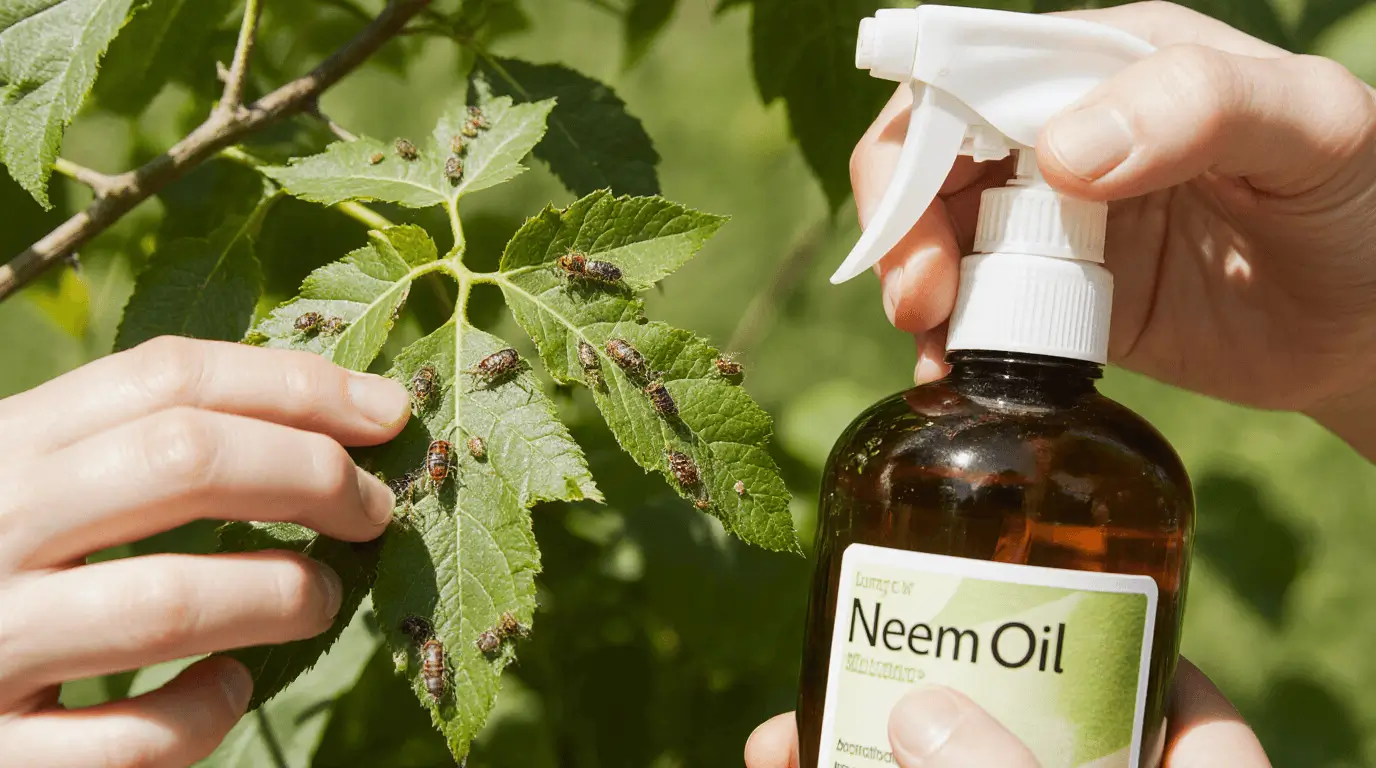
- In cooler climates, ensure protection from cold to keep your Persian lime tree safe from frost. If it’s container-grown, move it indoors during the winter months to avoid freezing temperatures. For in-ground plants, apply frost protection measures to increase survival during colder spells. Don’t forget about effective nutrient management, especially nitrogen, which supports fruit production and helps mature citrus plants flourish in any environment or condition.
4. Troubleshooting Common Issues in Persian Lime Tree Care
If your Persian lime tree shows yellowing leaves, it’s often a sign of overwatering or nutrient deficiencies, which can be a serious concern for gardeners. Start by checking the moisture level of the soil—if it feels excessively saturated, you may need to lessen watering.
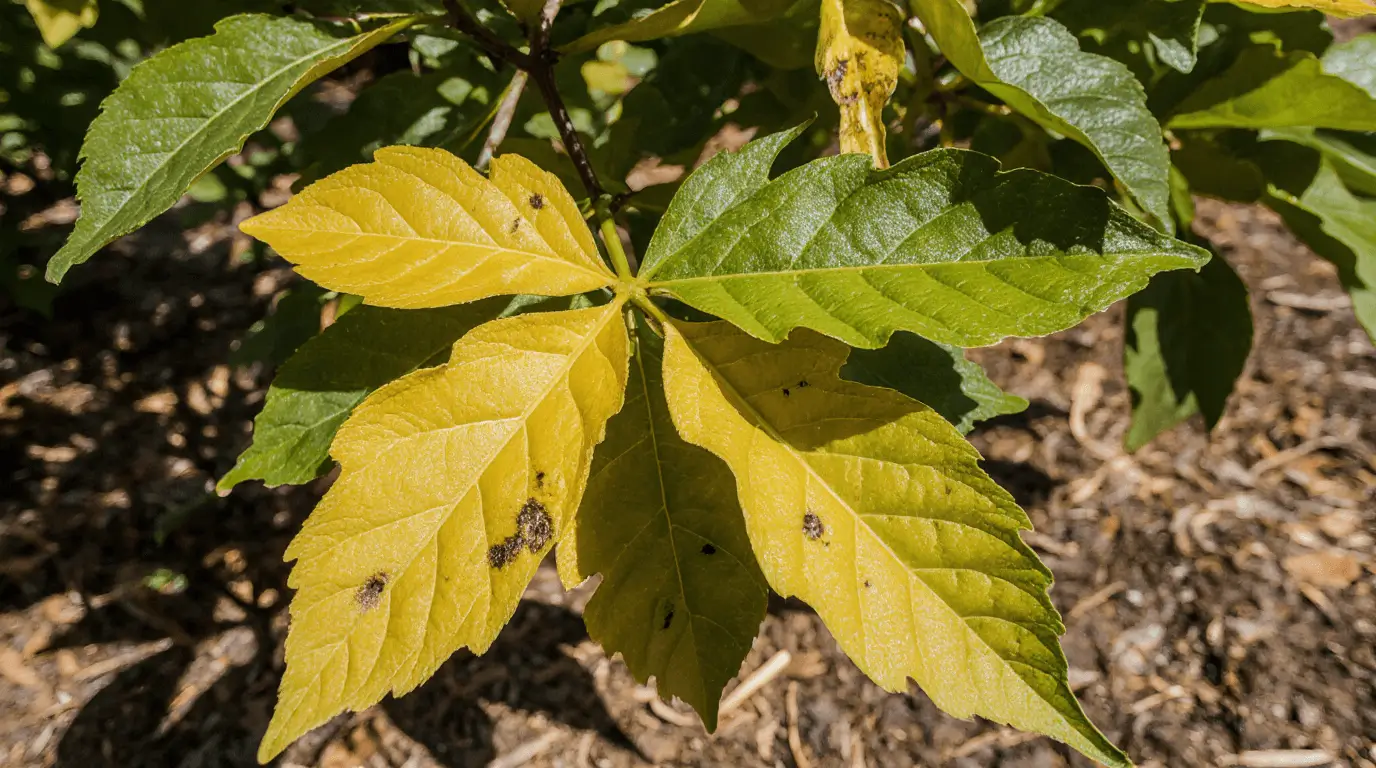
On the other hand, dry ground indicates a need to replenish the essential nutrients with a balanced fertilizer. Applying nitrogen and iron during winter can be beneficial, though identifying the underlying causes is equally important. As Crissy Blades explains, excessive watering affects the perfect balance your plant needs. Conducting a soil analysis helps you evaluate nutrient levels and gain valuable insights into what your tree might be lacking.
An abrupt leaf drop or wilting can be distressing, often caused by environmental stressors such as temperature fluctuations or inconsistent watering. To manage this, create a stable environment and maintain consistent care by observing conditions closely to prevent stress-related problems. Pest invasions like aphids and scale insects can also threaten your tree’s health. Keep an eye out for sticky residue or visible pests, and use neem oil or insecticidal soap to eradicate these nuisances effectively. Joining online gardening communities can provide additional support, resources, and advice from a fellow gardener. In this collaborative environment, sharing experiences helps everyone learn better care practices and find practical ways of overcoming challenges like lemon plant’s health concerns.
If your tree suffers from root rot, fungal diseases, or leaf spots, the situation can seem alarming and disheartening. To combat this, cut back on watering, enhance drainage, or in severe cases, consider repotting the tree with fresh soil to restore health and vitality. Prevent fungal growth and blight by ensuring good air circulation and avoiding overhead watering, which raises humidity levels. Continue to monitor tree’s health and show dedication and loving care, allowing your lime tree to flourish beautifully through patience and proper attention.
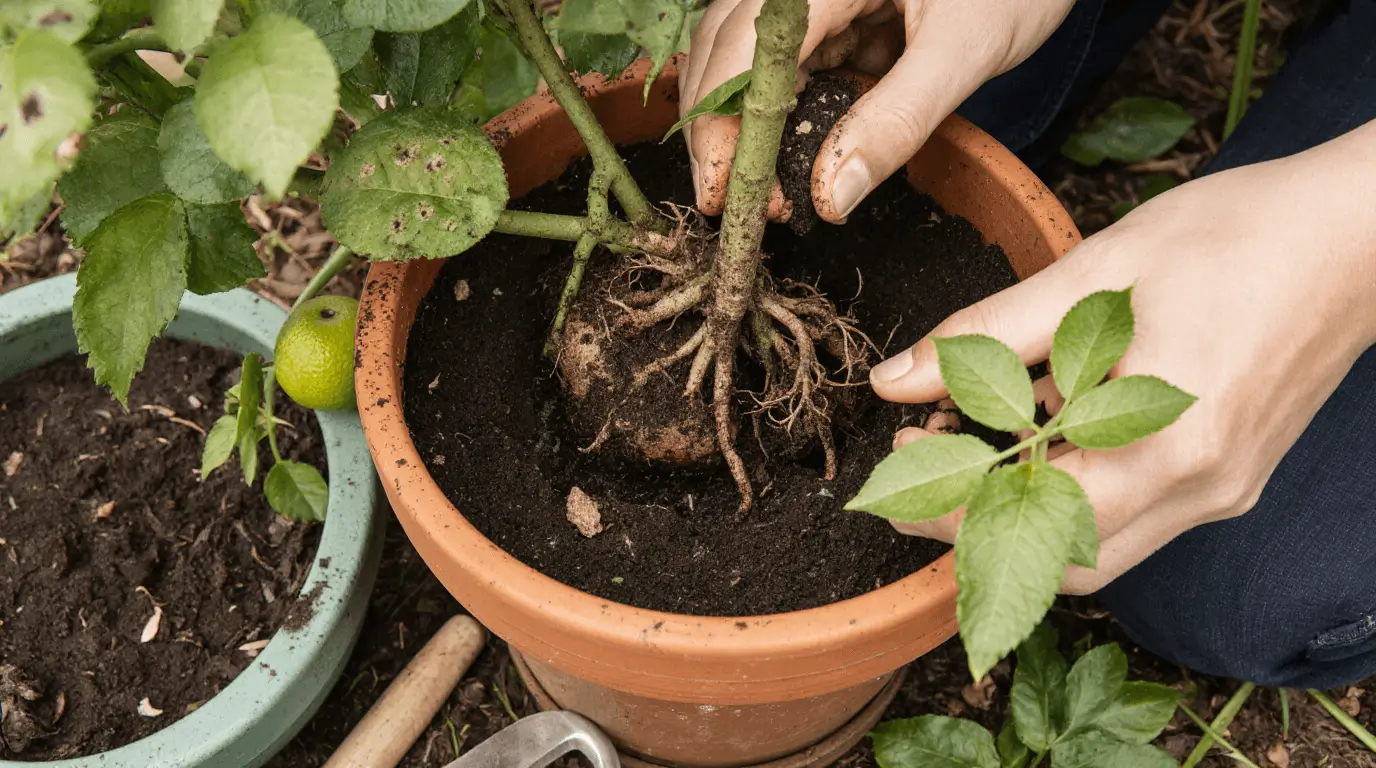
Read Also:
- Gardening & Plant Care Guide for Thriving Plants
- Tropical Fruit Trees: Grow Exotic Paradise at Home (Guide)
Conclusion
Caring for a Persian lime tree takes time, attention, and a bit of patience, but the results are well worth it. By monitoring moisture levels, managing nutrient deficiencies, and preventing overwatering, you ensure steady growth and long-term vitality. Paying attention to issues like yellowing leaves, root rot, or pest invasions early on helps maintain a balanced, healthy tree that continues to flourish year after year. Remember, proper care practices, steady dedication, and consistent loving care will always reward you with vibrant foliage and flavorful fruit — a true sign of a thriving lime tree.

FAQs
- Why are the leaves on my Persian lime tree turning yellow?
Yellowing leaves often occur due to overwatering or nutrient deficiencies. Check your soil to ensure it isn’t excessively saturated, and use a balanced fertilizer to replenish essential nutrients like nitrogen and iron. - How can I prevent root rot in my Persian lime tree?
Avoid waterlogging by maintaining proper drainage and using well-draining soil. If root rot develops, cut back on watering, remove any damaged roots, and consider repotting the plant in fresh soil. - What should I do if my tree suddenly drops its leaves?
Abrupt leaf drop can result from environmental stressors such as temperature fluctuations or inconsistent watering. Create a stable environment, follow consistent care, and maintain a regular watering schedule. - How do I deal with pests like aphids and scale insects?
Inspect your tree frequently for visible pests or sticky residue. Apply neem oil or insecticidal soap to eradicate the infestation without harming beneficial insects. - Are Persian lime trees sensitive to cold weather?
Yes, they are. In cooler climates, move container-grown trees indoors during winter months and use frost protection measures for in-ground plants to ensure their survival during colder spells.



